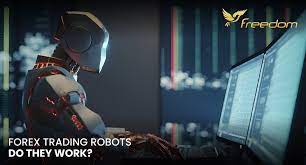
Introduction:
In the realm of forex trading, technological advancements have revolutionized the landscape, offering traders innovative tools to navigate the complexities of the market. One such tool that has gained significant traction is the forex robot. Also known as Expert Advisors (EAs), these automated trading systems have sparked considerable interest due to their potential to execute trades with precision and speed, promising enhanced efficiency and profitability for traders. In this article, we delve into the dynamics of forex robots, exploring their functionality, benefits, and considerations for traders.
Understanding Forex Robots:
Forex robots are software programs designed to automate the process of trading in the foreign exchange market. These algorithms are built upon predetermined trading strategies, which can range from simple to highly complex. They operate based on predefined parameters and technical indicators, analyzing market data to identify trading opportunities and execute trades without human intervention.
Functionality:
The functionality of forex robots varies depending on their design and programming. However, most robots operate on the principle of algorithmic trading, wherein they follow a set of rules and criteria to enter and exit trades. These criteria may include technical indicators such as moving averages, RSI (Relative Strength Index), MACD (Moving Average Convergence Divergence), or fundamental factors such as economic news releases and geopolitical events.
Benefits of Forex Robots:
- Automation: Perhaps the most significant advantage of forex robots is their ability to automate the trading process. By eliminating the need for manual intervention, traders can execute trades 24/7, even in volatile market conditions, without being tethered to their screens.
- Speed and Efficiency: Forex robots can analyze market data and execute trades within milliseconds, far faster than human traders. This rapid execution helps capitalize on fleeting market opportunities and ensures timely order placement.
- Emotion-Free Trading: Emotions such as fear and greed often cloud judgment and lead to impulsive trading decisions. Forex robots operate based on predefined rules, devoid of emotions, thereby eliminating the psychological biases that can negatively impact trading outcomes.
- Backtesting and Optimization: Forex robots allow traders to backtest their strategies using historical data, enabling them to assess performance and fine-tune parameters for optimal results. This iterative process helps refine trading strategies and adapt to changing market conditions.
Considerations for Traders:
While forex robots offer compelling benefits, traders should be mindful of certain considerations before incorporating them into their trading arsenal:
- Strategy Development: The effectiveness of a forex robot hinges on the underlying trading strategy. Traders must carefully develop or select a robust strategy that aligns with their risk tolerance, financial goals, and market conditions.
- Monitoring and Maintenance: Despite their autonomous nature, forex robots require periodic monitoring to ensure they are functioning as intended. Market dynamics can shift suddenly, necessitating adjustments to trading parameters or even temporary deactivation of the robot.
- Risk Management: While automation can enhance efficiency, it also amplifies the impact of poor risk management. Traders should implement appropriate risk controls, such as stop-loss orders and position sizing, to mitigate potential losses.
- Market Conditions: Forex robots may perform well in certain market conditions while faltering in others. Traders should assess the adaptability of their robots and be prepared to intervene or adjust strategies during periods of heightened volatility or unusual market behavior.
Conclusion:
Forex robots represent a powerful tool for traders seeking to streamline their trading operations and capitalize on market opportunities. Through automation, speed, and emotion-free execution, these systems offer the potential for enhanced efficiency and profitability. However, successful integration requires careful strategy development, ongoing monitoring, and disciplined risk management. By understanding the dynamics of forex robots and embracing best practices, traders can harness the full potential of these innovative tools to navigate the dynamic landscape of the forex market.